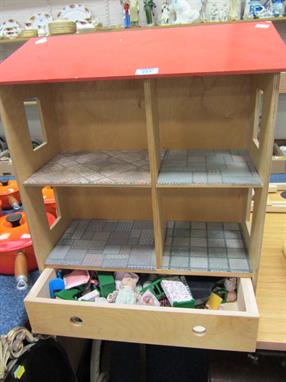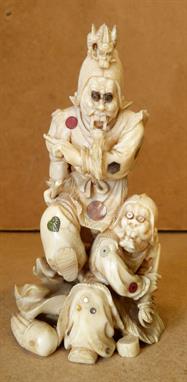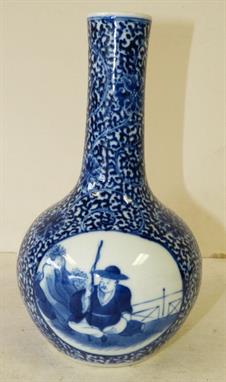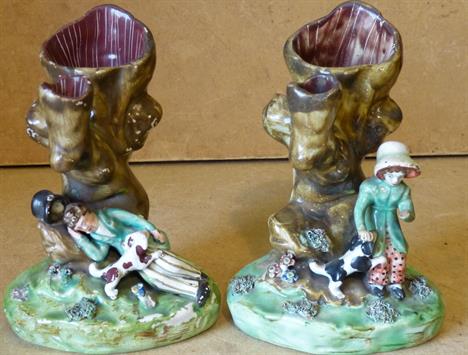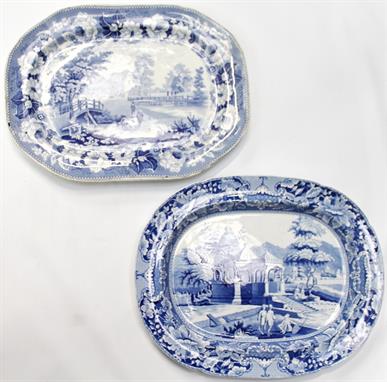A carved stone polychrome decorated figure group of the Pieta, possibly lower Austria, mid 15th century82cm high, 80cm wide, 32cm deepProvenanceGraham Cornall Antiques, MelbourneThis polychrome limestone sculpture represents the Pieta, in which the Virgin Mary cradles the dead body of her son. While the most famous example of this image type is the sculpture by Michelangelo in St Peter’s Basilica, the subject is derived from northern examples and was adopted quite late in Renaissance Italy. The Pieta, also referred to as Vesperbild, first appeared in German sculpture in around 1300 where early images often show the body positioned vertically, similar to depictions of the Deposition from the Cross, and also draw attention to the wounded, emaciated body. As the subject became more widespread, varied iconographies emerged. The type we see in this work, where Christ’s body lies horizontally across his mother’s lap, probably developed first in France. This image, which became especially popular, draws a symbolic connection between the lap of the Virgin and the Church altar on which, according to Catholic doctrine, the Eucharistic body of her son lies. The image therefore emphasized the salvific nature of Christ’s sacrifice and the redemptive power of the sacrament. Indeed, here the body is tilted up towards the viewer to accentuate the devotional focus on his humanity.The subject of the Pieta probably derived from mystical and popular devotional writings where events in between those described in the Gospels are imagined, suggesting an insight into the human, emotional responses of holy figures. Here the notion of Mary’s response to the death of her son and her cradling of his body before he is entombed is articulated with great sensitivity. Mary supports her son’s head with her right hand, while her left holds the edge of her cloak at her chest, suggesting that she is about to wipe her tears (as she is shown doing in numerous other Pieta sculptures). The faces of the figures are especially beautiful; Christ’s is gentle and relaxed while the Virgin’s subtly but very effectively suggests her sorrow. She looks not at her son, as is the norm for Pieta imagery, but to the distance; a detail that invests the image with a more meditative and poignant tone.As the sculpture is relatively well finished at the back and has a carved out section at the lower rear where it was anchored, it seems possible that it was originally positioned on a tomb. The subject probably, therefore, was intended to comfort the grieving. The composition of the figures demonstrates the extraordinary skill of the artist. It appears entirely natural, even ‘though in reality such a grouping would likely be awkward and unfeasible.Dr. Bronwyn Stocks
We found 659568 price guide item(s) matching your search
There are 659568 lots that match your search criteria. Subscribe now to get instant access to the full price guide service.
Click here to subscribe- List
- Grid
-
659568 item(s)/page
A late 19th Century/early 20th Century French Louis XVI style rosewood Bureau de Dame, with gilt metal mounts, the rectangular upper section with three quarter pierced gilt metal gallery above three short drawers, the cylinder front painted with figures in a bucolic landscape signed Chausse, frieze drawer desk opening mechanism, the interior with three small drawers and a fold out leather lined writing surface, on cabriole legs, 77 x 54 x 108cm h.
A late 19th Century Chinese ivory inlaid ebonised hardwood low table, the circular shaped top with moulded edge inlaid with pavillions, figures flying kites and cormorant fishermen within a border with scrolling drangons, butterflies and bats, above a pierced frieze with ivory turned spindles, raised on five curved legs with scrolled feet (some minor losses), 58cm diameter x 46cm h.
A pair of late 19th Century Chinese crackle glazed baluster vases and covers, each painted in underglaze blue with scrolling dragons chasing the flaming pearl, bats and clouds, with iron oxide borders, one cover associated together with another crackle vase painted with a pavillion and figures on a bridge (restored cover), the largest 23cm h.
A fine George III silkwork picture in the oval, depicting a young woman seated on a log accompanied by a young boy with blanket, embroidered in bright coloured silk with gouache painted sky, the figures with pencil drawn heads, in original gilt frame, C.1800 14"x12".
-
659568 item(s)/page






















